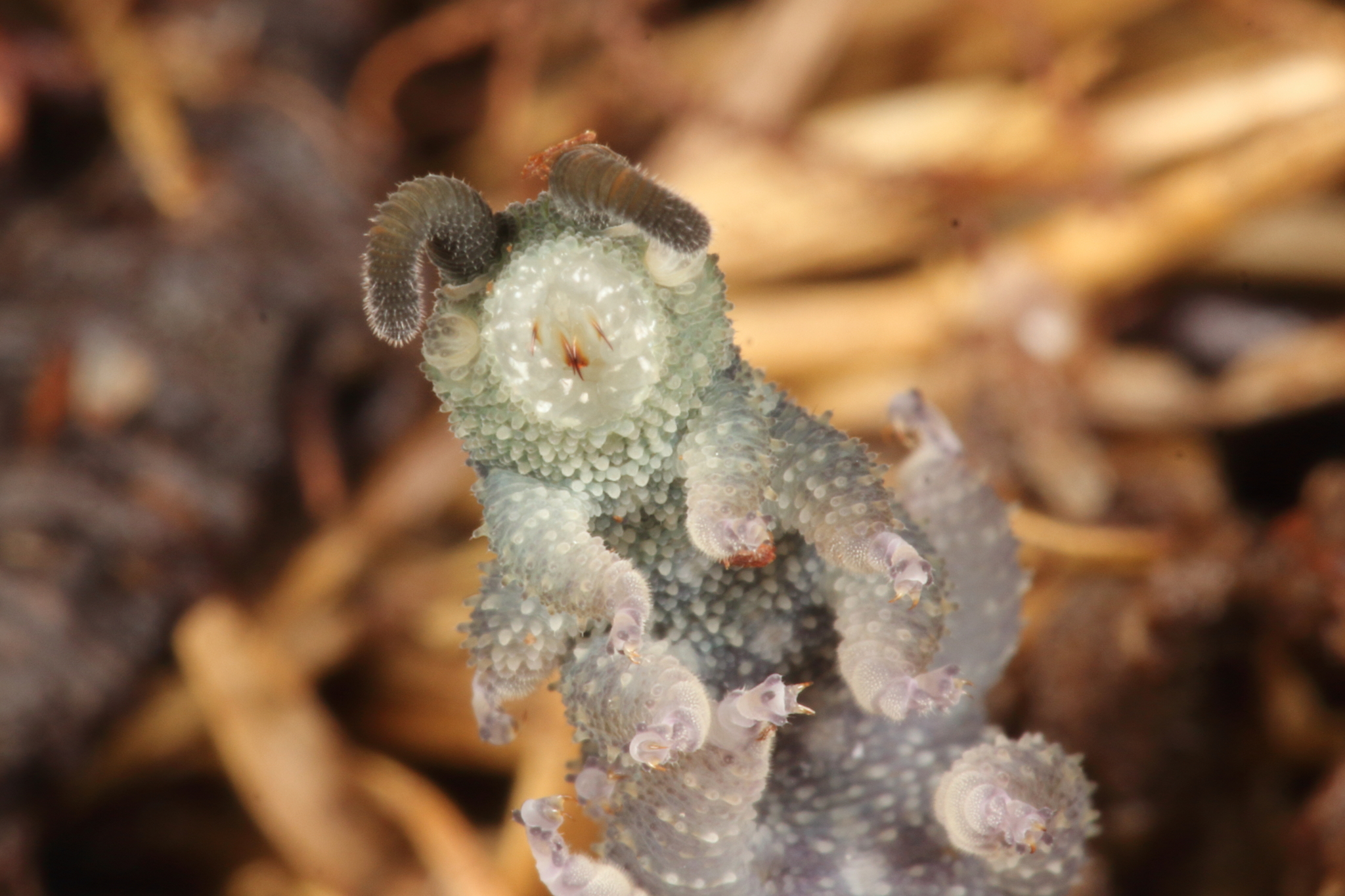|
Paraperipatus Papuensis
''Paraperipatus papuensis'' is a species of velvet worm in the Peripatopsidae family Family (from ) is a Social group, group of people related either by consanguinity (by recognized birth) or Affinity (law), affinity (by marriage or other relationship). It forms the basis for social order. Ideally, families offer predictabili .... This species is a pale greenish blue. Females of this species may have as few as 21 pairs of legs or as many as 29 pairs, exhibiting the greatest intraspecific variation in leg number found in any peripatopsid species. Males of this species range from 21 to 27 leg pairs. The maximum number of leg pairs recorded in this species (29) is also the maximum number of leg pairs found in the family Peripatopsidae. Females range from 22 mm to 83 mm in length, whereas males range from 19 mm to 45 mm. The type locality is in Western New Guinea, Indonesia. References Further reading * Onychophorans of Australasia Onychophoran spe ... [...More Info...] [...Related Items...] OR: [Wikipedia] [Google] [Baidu] |
Onychophora
Onychophora (from , , "claws"; and , , "to carry"), commonly known as velvet worms (for their velvety texture and somewhat wormlike appearance) or more ambiguously as peripatus (after the first described genus, ''Peripatus''), is a phylum of elongate, soft-bodied, many-legged animals. In appearance they have variously been compared to worms with legs, caterpillars, and slugs. They prey upon other invertebrates, which they catch by ejecting an adhesive slime. Approximately 200 species of velvet worms have been described, although the true number is likely to be much greater. The two extant families of velvet worms are Peripatidae and Peripatopsidae. They show a peculiar distribution, with the peripatids being predominantly equatorial and tropical, while the peripatopsids are all found south of the equator. It is the only phylum within Animalia that is wholly endemic to terrestrial environments, at least among extant members. Velvet worms are generally considered close relatives o ... [...More Info...] [...Related Items...] OR: [Wikipedia] [Google] [Baidu] |
Peripatopsidae
Peripatopsidae or the Southern Velvet Worms are one of two extant families of velvet worm. This family includes more than 140 described species distributed among 41 genera, but some authorities deem only 131 of these species to be valid. The French zoologist Eugène Louis Bouvier proposed this family in 1905 with '' Peripatopsis'' as the type genus. Description The Peripatopsidae exhibit relatively many characteristics that are perceived as original or "primitive" with respect to the Peripatidae. The species in this family have relatively few legs, ranging from 13 pairs (in '' Ooperipatellus nanus'') to a maximum of 29 pairs (in '' Paraperipatus papuensis''). Behind or between the last leg pair is the genital opening (gonopore). This family includes both oviparous genera (e.g., '' Ooperipatellus'' and '' Ooperipatus'') and viviparous genera, which adopt various modes of supplying nourishment to their embryos, ranging from lecithotrophic ovoviviparity (with yolky eggs retained ... [...More Info...] [...Related Items...] OR: [Wikipedia] [Google] [Baidu] |
Family (biology)
Family (, : ) is one of the eight major hierarchical taxonomic ranks in Linnaean taxonomy. It is classified between order and genus. A family may be divided into subfamilies, which are intermediate ranks between the ranks of family and genus. The official family names are Latin in origin; however, popular names are often used: for example, walnut trees and hickory trees belong to the family Juglandaceae, but that family is commonly referred to as the "walnut family". The delineation of what constitutes a family—or whether a described family should be acknowledged—is established and decided upon by active taxonomists. There are not strict regulations for outlining or acknowledging a family, yet in the realm of plants, these classifications often rely on both the vegetative and reproductive characteristics of plant species. Taxonomists frequently hold varying perspectives on these descriptions, leading to a lack of widespread consensus within the scientific community ... [...More Info...] [...Related Items...] OR: [Wikipedia] [Google] [Baidu] |
Western New Guinea
Western New Guinea, also known as Papua, Indonesian New Guinea, and Indonesian Papua, is the western half of the island of New Guinea, formerly Dutch and granted to Indonesia in 1962. Given the island is alternatively named Papua, the region is also called West Papua (). It is one of the seven geographical units of Indonesia in ISO 3166-2:ID. Lying to the west of Papua New Guinea and geographically a part of the Australian continent, the territory is almost entirely in the Southern Hemisphere and includes the Biak and Raja Ampat archipelagoes. The region is predominantly covered with rainforest where traditional peoples live, including the Dani of the Baliem Valley. A large proportion of the population live in or near coastal areas. The largest city is Jayapura. The island of New Guinea has been populated for tens of thousands of years. European traders began frequenting the region around the late 16th century due to spice trade. In the end, the Dutch Empire emerged ... [...More Info...] [...Related Items...] OR: [Wikipedia] [Google] [Baidu] |
Onychophorans Of Australasia
Onychophora (from , , "claws"; and , , "to carry"), commonly known as velvet worms (for their velvety texture and somewhat wormlike appearance) or more ambiguously as peripatus (after the first described genus, ''Peripatus''), is a phylum of elongate, soft-bodied, many-legged animals. In appearance they have variously been compared to worms with legs, caterpillars, and slugs. They prey upon other invertebrates, which they catch by ejecting an adhesive slime. Approximately 200 species of velvet worms have been described, although the true number is likely to be much greater. The two extant families of velvet worms are Peripatidae and Peripatopsidae. They show a peculiar distribution, with the peripatids being predominantly equatorial and tropical, while the peripatopsids are all found south of the equator. It is the only phylum within Animalia that is wholly endemic to terrestrial environments, at least among extant members. Velvet worms are generally considered close relatives o ... [...More Info...] [...Related Items...] OR: [Wikipedia] [Google] [Baidu] |


